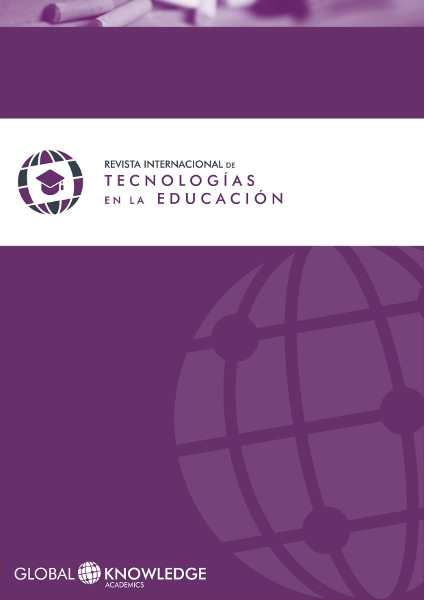Teaching Image: Material Support Language for Teaching Mediation in Learning Environments with Technologies
DOI:
https://doi.org/10.37467/gka-revedutech.v3.432Keywords:
Online Learning, Teaching Mediation, Didactic Image, Educational Technologies, Teaching Resources DitigalesAbstract
The image is a symbolic element that certainly fills our environment in all areas, especially in areas such as entertainment, advertising, media, etc. Its potential is infinite in each of the fields from which you study this because of their configuration, generating a visual language of communication from which the man intaractúa each other and with their context. Thus, the image as communicative product has been the guardian and transmitter of knowledge since time immemorial, as Egyptian hieroglyphics, to give a clear example. From the educational field, the image has been involved in various materials and educational resources such as textbooks, guides, charts, manuals, etc., however, their role has been to support resources for learning and not to pedagogical mediation instrument in the whole process of teaching and learning. Therefore, in the present an approach reivindicador exposed to potentiate the didactic nature of the image. It is possible to approach the study of the teaching of the image with this approach, thanks to new environments learned-zaje brought about by digital technologies, in which the graphical interfaces (built and configured by language-jes visual), are precisely the didactic element of pedagogical mediation between actors: student-teachers (users), content and learning technologies (GUIs - object), educational institutions and context (environment), teaching-learning process (pedagogical action). Thus, from the analysis of up-tes, educational communication, visual configuration, design and significance of teaching image are elements of pedagogical mediation in the teaching-learning mediated by digital technologies, which act as a vehicle or means digital teaching resources.
Global Statistics ℹ️
|
699
Views
|
839
Downloads
|
|
1538
Total
|
|
References
Barthes, R. (1971). Elementos de Semiología. Madrid, España: Editor Alberto Corazón.
Campos, Y. (200). Estrategias de Enseñanza-Aprendizaje. México.
Cirlot Laporta, J. E. (1969). Diccionario de símbolos. Barcelona, España: Editorial Labor.
Costa, J. (1998). La esquemática. Barcelona, España: Editorial Paidos.
Diéguez Rodríguez, J. L. (1978). Las funciones de la imagen en la enseñanza. Semántica y Didáctica. Barcelona, España: Editorial Gustavo Gili.
Dondis, A. (1976). La Sintaxis de la Imagen. Introducción al alfabeto visual. Barcelona, España: Editorial Gustavo Gili.
Ferreiro, R. y DeNapoli, A. J. (s.f.). Un concepto clave para aplicar exitosamente las tecnologías de la educación: los nuevos ambientes de aprendizaje. Revista Panamericana de Pedagogía.
González Ochoa, C. (1986). Imagen y sentido. Elementos para una semiótica de los mensajes visuales. En: Cuadernos del Seminario de Poética 9. México: Universidad Nacional Autónoma de México.
Haidar, J. (1995). Semiótica (1er curso). Apartado: El campo de la Semiótica Visual. México: Universidad Autónoma Metropolitana.
Maldonado, T. (2007). Memoria y conocimiento. Sobre los destinos del saber en la perspectiva digital. Editorial Gedisa.
Medrano, I. (2009). La mediación pedagógica en las competencias para la vida en el desempeño de los alumnos de 2º grado de primaria. Tesis de Grado. México: UNAM.
Ojeda-Castañeda, G. (1998). Hombre y Telecomunicaciones: Las estrategias políticas de la distancia. México, D. F., México: Universidad del Claustro de Sor Juana.
Pozo Sánchez, M. D. (2001). Los nuevos ambientes de aprendizaje. Material didáctico del Master en Educación a Distancia E-learning. Sevilla, España: Divulgación Dinámica.
Regil Vargas, L. (2005). Hipermedia: Medio, Lenguaje, Herramienta del Arte Digital. Revista Digital Universitaria. Publicaciones Digitales de la Universidad Nacional Autónoma de México.
Reguera, F. (2000). UOC: Tecnología al servicio de la enseñanza. Revista Net Conexion. Barcelona, España: Ed. Zinco Multimedia.
Royo, J. (2006). Diseño Digital. Ed. Paidos.
Solano Perez, K. (2001). Multimedia e Internet para el aprendizaje: Portal de aprendizaje interactivo para niños latinoamericanos. México.
Titone, R. (1968). Metodología didáctica. Madrid, España: Ediciones Rialp.
Valdés, J. C. (2005). Mediación pedagógica y las posibilidades educativas de las Nuevas Tecnologías. Una reflexión epistemológica desde la pedagogía. Tesis de Grado. México: UNAM.
Villafañe, J. y Mínguez, N. (1996). Principios de Teoría General de la Imagen. Madrid, España: Paraninfo.
Villarreal, D. (2004). Análisis de la comunicación educativa de la pedagogía en línea desde el enfoque de mediación pedagógica en el uso de nuevas tecnologías de la información y comunicación. Tesis. México: UNAM.
Downloads
Published
How to Cite
Issue
Section
License
Those authors who publish in this journal accept the following terms:
- Authors will keep the moral right of the work and they will transfer the commercial rights.
- After 1 year from publication, the work shall thereafter be open access online on our website, but will retain copyright.
- In the event that the authors wish to assign an Creative Commons (CC) license, they may request it by writing to publishing@eagora.org







